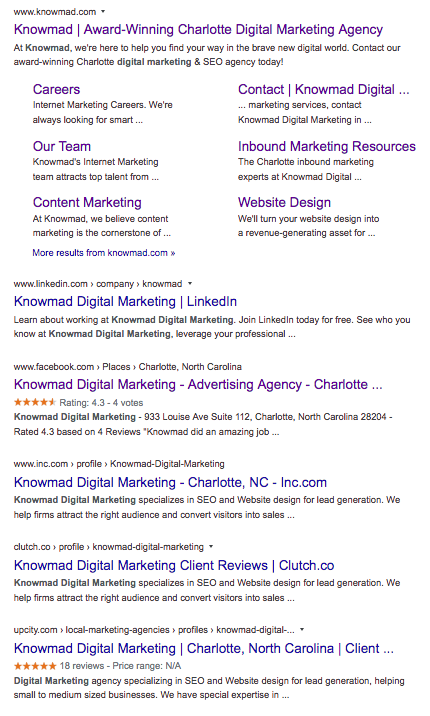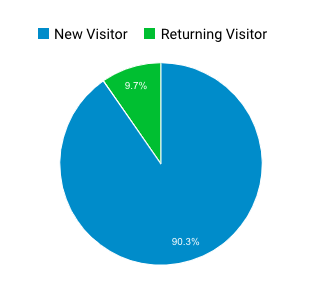author
Diona Kidd
According to a CMO Survey from Deloitte, “marketing analytics spending is growing moderately but is expected to surge by 61 percent in the next three years.” While marketing analytics platforms can show you everything from clicks, page visits, entrance rates, bounce rates, conversions, and more, how can you determine if your digital marketing investment is effective?
In order to understand if your digital marketing is effective or not, you’ll need to step back from industry jargon, especially vanity metrics that don’t give you a clear picture.
We’ll take you through the questions you should be asking to see just how well your digital marketing strategy is performing. Then, we’ll explain what marketing KPIs will deliver a successful digital marketing campaign analysis.
1. Effective Search Marketing
Before you begin to evaluate a search marketing campaign for effectiveness, it’s important to separate branded vs. non-branded search data. Both are critical for digital marketing success, but they require different types of measurement.
If your digital marketing goal is to generate new leads and customers through search marketing, all of the following KPI’s are relevant:
- Traffic: The number of people visiting your website should be increasing over time, especially the landing pages that are targeting non-branded industry keywords.
- Clicks and Conversions: The number of people who clicked on a form on your website or picked up the phone and called your company for a service or a product. We recommend CallRail.
- Bounce Rates: Bounce rate varies by industry, but if the bounce rate on a high-volume landing page is in the 70s or higher with a low conversion rate, it’s an indication that your digital marketing efforts for that landing page need improvement.
If your goal is to increase brand awareness and visibility in the search engines, many companies invest in paid ads for branded terms. While bidding on your brand keywords is a good idea, how does your brand perform in the SERP outside of the paid campaign? If your digital marketing campaign for branding is effective, you can turn off all of the paid ad campaigns, and your brand will still dominate Page One under the paid ad spaces.
Using Knowmad Digital Marketing as an example, note how every organic listing on Page One of Google shows a link to our website or a link a relevant, authoritative website:

2. Google Search Console: Measure Branded vs. Non-branded
Measure effectiveness for both branded and non-branded searches with the Queries Report in Google Search Console. While there are subscription tools that will give you landing page data that you can associate with queries, the report in Google Search Console is free and easy to use. The impressions column will tell you the number of times a URL that’s associated with that word or phrase from your site appeared in search results, not including paid Google Ads impressions. If your team has been investing a significant amount of time and money in certain target keywords or phrases but there are very few impressions for it in the Queries Report, it’s time to take a closer look at that SEO campaign. If your brand name shows the highest number of impressions, the digital branding campaign is a success.
If non-branded queries show a very low number of impressions, find out if your website is set up correctly for SEO with our SEO Checkup Checklist:
Not sure what might be missing from your pay-per-click or SEO strategy?
3. Relevant Website Traffic
Is the website generating traffic that’s interested in your offerings? Take the time to make sure the visitors are worth all that effort (and money) that it took to get them there in the first place.
Where to look:
- Google Analytics
Important KPIs:
- Click-through rates
- Visit-to-Conversion Ratio
Indicators of success:
Click-through rates vary per industry and digital marketing channel, but website pages with consistent, month-to-month increases in traffic AND increases in click-through rates are a sign of a winning strategy for capturing relevant website traffic. Meeting your audience at every stage of the sales funnel is a critical part of lead generation, and it all starts with the click-through once the visitor enters your site.
4. Attracting Both New & Returning Visitors
A successful digital marketing strategy generates interest from new members of your target audience AND returning visitors. Your website content should help push already interested prospects through the sales funnel and attract new visitors. As you measure your digital marketing efforts in the form of new vs. returning visitors, you can use any of the following tools:
- Google Analytics: Audience Overview Report - Users

- Google Analytics: Behavior Report - New vs. Returning
- HotJar - Set up heatmaps to determine how both new and returning visitors interact with your website content
Indicators of success:
This is rather straightforward; if both are performing well, or increasing over time, then your strategy is effective. If new visitor activity is high on certain landing pages but returning visitor activity is low on pages designed to capture leads who are further along in the buying process, then you’ll need to dive further into the data and identify potential problems.
Note: The B2B sales cycle has changed. According to Gartner, 27% of B2B buyers research solutions/products online and there are six-10 decision makers. If your website is designed for the B2B buyer, focus on improving the returning visitor rates and engaging those visitors.
5. Are CTAs generating qualified leads or tire kickers?
Success Metrics:
- Conversions: How many website conversions turned into customers and are these numbers helping you reach sales goals?
- Cost per conversion: Does the cost per conversion generate enough ROI to justify the strategy?
Conversion rates vary greatly by industry, but if your sales team is grumbling about the quality of leads generated from the website, it’s a sign that your digital marketing plan isn’t as effective as it could be. If you’re unsure how to go about measuring lead quality, we recommend lead scoring, a HubSpot feature.
6. Fast and Device-Friendly
Bottom line: If your design and content are incredible, no one will be able to see it if the site doesn’t load quickly or if the site is buggy on a mobile device. On average 52.2% of website traffic comes from mobile phones. In addition, 64% of these mobile phone viewers expect pages to load within 4 seconds.
Look for any of the following issues on your website:
- Slow site speed, especially on mobile
- Unclickable buttons and phone numbers
- Forms that don’t work
- Hidden information and CTAs from unscalable designs
Most SEO Audits will include a technical performance section. Request a free SEO Audit today:
Whether you’re a marketing team operating in-house or relying on a marketing agency, it’s important to check in on digital marketing effectiveness regularly. Website features can malfunction, competitors can step up their digital marketing budget, and your audience can land on a competitor’s website in seconds.








